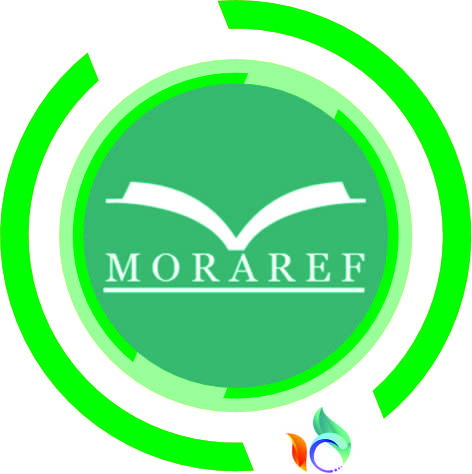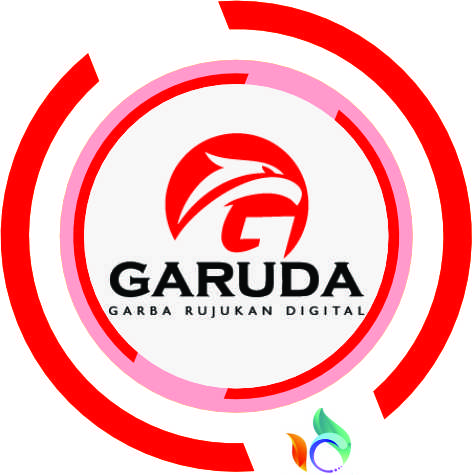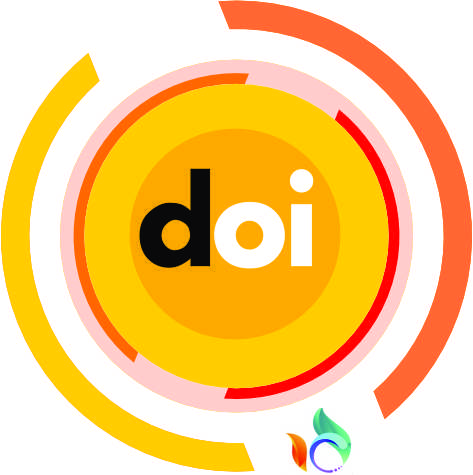Respon Masyarakat Terhadap Metode Pengukuran Arah Kiblat Menggunakan Keyakinan (Studi Kasus Desa Wora Kec. Wera Kab. Bima)
DOI:
https://doi.org/10.47766/astroislamica.v4i1.3440Keywords:
belief-based method, community response, qibla directionAbstract
This research is based on the community's habit of measuring the direction of the Qibla every year during Eid al-Fitr prayers in the field. Every year the village community will invite village elders to carry out measurements. With the development of the times and falak instruments, they are now easily accessible everywhere, but people still use them. the habit is the traditional method. So this research aims to determine the methods and procedures for measuring the Qibla direction carried out by Wora Village elders as well as the community's response to the method of measuring the Qibla direction being measured. This research is qualitative research with the type of field research. Meanwhile, the approach that the author uses in this research is a sociological research approach. The results of this research are first: measuring the direction of the Qibla by Wora Village elders using the belief method has a difference in Qibla direction of 13˚ 26' 32.17”. Second: The community's response to the Qibla direction measured by the village elders is. First: they tend to accept measurement methods based on long-standing habits (tradition). Second: People don't know anything about the method of measuring the Qibla direction.
References
Alfaqih, Malik. “ANALISIS KONSEP TOLERANSI ARAH KIBLAT THOMAS DJAMALUDDIN PERSPEKTIF FIQIH DAN ASTRONOMI.” Universitas Islam Negeri Walisongo, 2021.
Angkat, M Arbisora. “Studi Analisa Penentuan Arah Kiblat Masjid Raya Al-Mashun Medan,” 2006, 34–44.
Awaludin, Muhammad. “Re-Interpretasi Keabsahan Arah Kiblat Masjid Kuno,” 2013, 138–55.
Cut Nazar Mutia Hanum, and Ismail Ismail. “Pandangan Tokoh Agama Jungka Gajah Terhadap Arah Kiblat Bagi Orang Yang Jauh Dari Ka’bah.” Astroislamica: Journal of Islamic Astronomy 1, no. 2 (December 28, 2022): 169–86. https://doi.org/10.47766/ASTROISLAMICA.V1I2.934.
Dewi Rahayu, and Laiyina Ukhti. “Uji Akurasi Arah Kiblat Menggunakan Azimut Bulan Purnama.” Astroislamica: Journal of Islamic Astronomy 1, no. 1 (June 30, 2022): 01–20. https://doi.org/10.47766/ASTROISLAMICA.V1I1.681.
Dkk, Achmad Jaelani. Hisab Rukyat MMenghadap Kiblat: Fiqh, Aplikasi, Praktis, Fatwa, Dan Software,. Semarang: PT Pustaka Rizki Putra, 2012.
“Dokumen Desa Woara Kec. Wera Kab. Bima,” 2022.
El-Banjary, Nur Hidayatullah. “Menentukan Arah Kiblat Dengan Hembusan Angin (Perspektif Fiqh Dan Sains),” 2016. https://doi.org/DOI: https://doi.org/10.30596/jam.v2i1.761.
Fadholi, Ahmad. Ilmu Falak Dasar. Semarang: El-wafa, 2017.
Faridah, Siti Nurul Iffah. “Toleransi Arah Kiblat Menurut Mazhab Hanafi Dalam Perspektif Fikih Dan Astronomi.” Universitas Islam Negeri Walisongo, 2017.
Halim, Samsul. “Studi Analisis Terhadap Bintang Rigel Sebagai Acuan Penentu Arah Kiblat Di Malam Hari,” 2020. https://doi.org/https://doi.org/10.20414/afaq.v2i1.2298.
Hambali, Slamet. Ilmu Falak: Arah Kiblat Setiap Saat. Yokyakarta: Pustaka Ilmu, 2017.
———. Ilmu Falak: Penentuan Awal, Waktu Salat & Arah Kiblat Seluruh Dunia. Semarang: Semarang: Program Pascasarjan IAN Walisongo, 2002.
———. Ilmu Falak 1. Semarang: Program Pasca Sarjana Iain Walisongo, 2011.
Hasjun, Iyan, Andi Jusran Kasim, and Nur Astaman Putra. “Uji Akurasi Hasil Pengukuran Arah Kiblat Pegawai Kemasjidan Kua Menggunakan Aplikasi Google Earth.” Astroislamica: Journal of Islamic Astronomy 3, no. 1 (June 30, 2024): 114–35. https://doi.org/10.47766/astroislamica.v3i1.2796.
Hidayati, Siti Anisa, and Yushardi. “Kajian Penentuan Arah Kiblat Menggunakan Arah Planet Venus,” 2023. https://doi.org/https://doi.org/10.20414/afaq.v5i1.6338.
Indayati, Wiwik. “KONSEPSI ARAH KIBLAT TANAH HARAM PERSPEKTIF HADIS,” 2021. https://doi.org/DOI: https://doi.org/10.24252/ifk.v5i1.23948.
Islam, Universitas, and Negeri Alauddin. “Toleransi Kemelencengan Arah Kiblat” 4 (2023): 109–22.
Ismail, Ismail, Dikson T. Yasin, and Zulfiah. “Toleransi Pelencengan Arah Kiblat Di Indonesia Perspektif Ilmu Falak Dan Hukum Islam.” Al-Mizan 17, no. 1 (June 30, 2021): 115–38. https://doi.org/10.30603/am.v17i1.2070.
Izzuddin, Ahmad. “The Problems of the Relationship between Science and Religion in Qibla Direction Calibration at the Great Mosque of Demak and Baiturrahman Mosque in Semarang, Indonesia.” Journal of Islamic Law (JIL) 3, no. 2 (August 1, 2022): 111–31. https://doi.org/10.24260/JIL.V3I2.823.
———. “Typology Jihatul Ka’bah on Qibla Direction of Mosques in Semarang.” Ulul Albab: Jurnal Studi Dan Penelitian Hukum Islam 4, no. 1 (November 1, 2020): 1–15. https://doi.org/10.30659/JUA.V4I1.12186.
Nurkhanif, Muhammad. “Problematika Sosio-Historis Arah Kiblat Masjid ‘Wali’ Baiturrahim Gambiran Kabupaten Pati Jawa Tengah.” Al Qodiri : Jurnal Pendidikan, Sosial Dan Keagamaan 15, no. 2 (2018): 32–58.
Nurqolbi DY, Yusuf, Ulil Albab Al aulia Alpaten, and Kurniawan Kurniawan. “Kajian Penentuan Arah Kiblat Dengan Sensor Magnetik Kompas Android.” Astroislamica: Journal of Islamic Astronomy 3, no. 2 (December 1, 2024): 193–210. https://doi.org/10.47766/astroislamica.v3i2.3429.
Nurqolbi, Yusuf, and Dwi Yulianto. “STUDI ANALISIS SENSOR MAGNETIK PADA KOMPAS ANDROID DALAM MENENTUKAN ARAH,” 2022.
Rakhmadi, Arwin Juli, Hariyadi Putraga, Marataon Ritonga, and Ismail Ismail. “Frequency-Based Analysis of Mosque Qibla Errors in Medan.” Al-Hilal: Journal of Islamic Astronomy 7, no. 1 (2025): 37–50. https://doi.org/10.21580/AL-HILAL.2025.7.1.24203.
Rakhmadi, Arwin Juli, and Hasrian Rudi Setiawan. “Pemanfaatan Instrumen Astronomi Klasik Mizwala Dalam Pengukuran Dan Pengakurasian Arah Kiblat.” Maslahah: Jurnal Pengabdian Masyarakat 1, no. 2 (October 7, 2020): 152–63. https://doi.org/10.56114/MASLAHAH.V1I2.69.
Rakhmat, Jalaluddin. Psikolog Umum Dan Perkembangan. Bandung: Remaja Rosdakarya, 2004.
Sabiq, Sayyid. Fiqh Sunnah Terj: Khairul Amru Harahap. Jakarta: Cakrawala Publishing, 2008.
Sudibyo, Muh. Ma’rufin. Sang Nabi Pun Berputar Arah Kiblat Dan Tata Cara Pengukurannya. Solo: Tinta Medina, 2011.
Downloads
Published
Issue
Section
License
Copyright (c) 2025 Kurniawan Kurniawan

This work is licensed under a Creative Commons Attribution-ShareAlike 4.0 International License.








